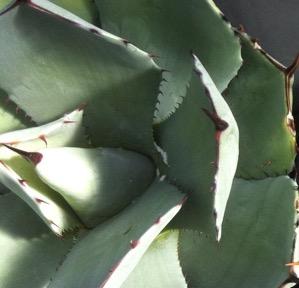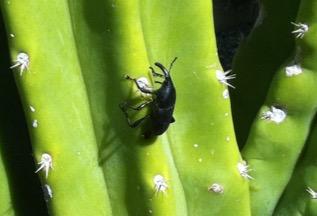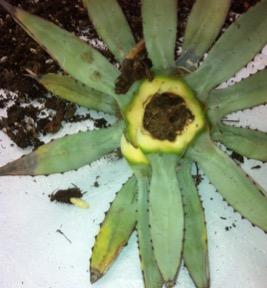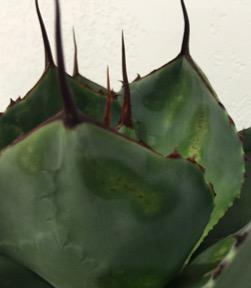Spring 2016: Agave pests
Regional Report San Diego and Riverside Counties by James A. Bethke
Several years ago, we received calls about an invasive mealybug on agave in Southern California (fig. 1), which has recently been identified to species by CDFA scientists (von Ellenrieder and Watson 2016) as Pseudococcus variabilis sp. n. (Hemiptera: Coccomorpha: Pseudococcidae). Since this species was not previously recorded in California, it was treated as an invasive mealybug and required regulation. Von Ellenrieder and Watson suggest that this mealybug is probably native to Mexico and has only recently moved into Southern California on Agavaceae, possibly through the nursery trade or directly into landscapes. It has been detected in nurseries in Los Angeles, San Diego, Santa Barbara and Riverside counties, and outdoors in landscaped areas in Los Angeles, San Diego and Santa Barbara counties. In Mexico, it has been recorded from Jalisco State infesting Agave tequilana but it most likely has a wider distribution and host range within Agavaceae.

Soon after we addressed the agave mealybug, we received calls about agave weevil infestations. It was causing significant damage to a number of different cacti (fig. 2) and agave (fig. 3) at local nurseries and in landscapes in San Diego County. We observed the effectiveness of systemic treatments of imidacloprid on potted agave, but we are unsure how well that kind of treatment would work in the landscape. We were able to rear some of the weevils at the Center for Applied Horticultural Research, but we were unable to conduct any trials.


Lastly and more recently, we have received a flurry of calls regarding disease-like damage on agave. When requesting photos (fig. 4), we noticed that the symptoms resembled aloe mite damage and checked the scientific literature for such occurrences on agave. Upon further investigation and confirmation microscopically, we determined that indeed there were eriophyid mites present, and that low infestation levels were present in several locations. Unfortunately, some of the samples contained mites that were causing damage far down into the growing point. Clearly, that damage would not be visible for about a year or until the leaves had flushed out. Some of the visible damage on the plants was barely noticeable, but on some plants the damage was severe. Each location also contained aloe plants with aloe mite damage, but apparently the mites on the agave plants are not aloe mites but are a different species of eriophyid mite. Eriophyid mites are well known for being host-plant specific, so it is not unusual to find two different mite species on two different but similar plant types. The damage on agave is less pronounced than typically found on aloe, but it is unsightly enough to make many plants unmarketable.

Eriophyid mites are commonly known as gall mites, bud mites, rust mites, erineum mites, witches' broom mites, blister mites and so on, referring to the symptoms caused by a particular species, and many times the damage resembles disease symptoms. Eriophyid mites are typically wormlike or spindle shaped and soft bodied. All eriophyid mites are plant feeding. They are extremely tiny; the majority of them are less than 300 microns long, and essentially invisible to the unaided eye. They can even be difficult to see with a stereomicroscope without 60X power. Like other mites, they have two body parts. They are, however, unique among mites in that they only have two pairs of legs throughout their life cycle. Our research has shown that preventive applications are necessary to avoid damage by these Eriophyids.
Be on the lookout for these pests, if you are growing agave.
James A. Bethke
Farm Advisor, Nurseries and Floriculture
UC Cooperative Extension San Diego, North County Office
151 E. Carmel St., San Marcos, CA 92078
(760) 752-4715 phone; (760) 752-4725 fax
jabethke@ucdavis.edu
http://cesandiego.ucdavis.edu/
References
von Ellenrieder, N. and G. Watson. 2016. A new mealybug in the genus Pseudococcus Westwood (Hemiptera: Coccomorpha: Pseudococcidae) from North America, with a key to species of Pseudococcus from the New World. Zootaxa. 4105(1): 065–087.












